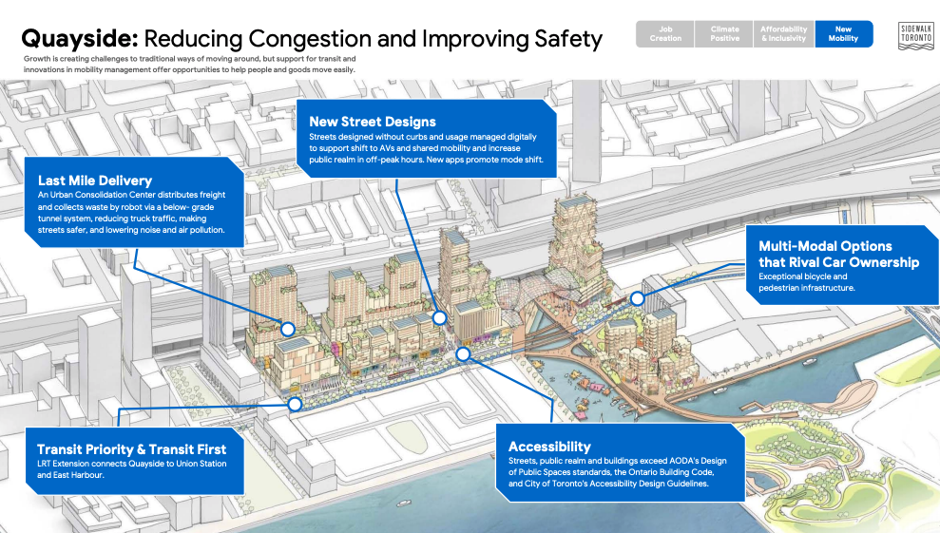
Conversations that change minds always appeal to people’s priorities.
These are conversations we’ve had here about subjects like the risks of climate change (“An Enabling Perspective for Our Wounded World”), the current imbalances in the American economy (“The Social Contract Around Our Work Is Broken”), the impacts of innovation (“Whose Values Will Save Us From Our Technology?”) and their effects on workers, families and communities.
Unfortunately, many of us don’t talk to anyone about how a warming planet is already impacting us, how the risks are accelerating, and what each of us can do about it. “What has climate change got to do with me?” or more pointedly, “What has global warming got to do with what is important to me?”
What environmentalists consider a horrifying catastrophe barely registers as a concern for many of us, and much of that disconnect comes from how environmentalists have talked about it. It’s almost as if they think the health and beauty of the earth (remember “the snail darter”?) is more important than the freedom or prosperity of the people in it– when the challenge should never be expressed as an either/or.
Arguments about the sanctity of the biosphere that may seem obvious to me won’t persuade skeptics who are far more concerned about making a living off the land. So it’s fair to ask: why can’t the risks of global warming be conveyed in terms of its impacts on human freedom and prosperity—that is, through the lens of a very different set of priorities? Otherwise, we’re doomed to leaving half of the constituency that’s needed for change out of the loop.
Whether a skeptic is open to listening to someone who wants to persuade them is also key. I’m never going to change your mind if you don’t trust me already, and much of that trust comes from having credibility within a community that already shares at least some of your values. It’s how Nixon’s legacy as an anti-communist gave him credibility with conservative constituents when he wanted them to change their minds about improving relations with communist China in the 1970s.
Until recently, there were very few leaders in the community of global warming skeptics whose minds were changed by the environmental record AND who were also willing persuade others who share their values to change their minds too by discussing how they became convinced by the enormous risks that are involved. Whether the issue is climate change or something else, the stature of the persuader and his or her willingness to explain their evolution from skeptic to believer in a language that speaks to common values also matters.
Some recent polling data about the gulf between believers and non-believers when it comes to global warming speaks to the enormity of the bridge-building challenge.
According to a Gallup poll in March, nearly 70% of Republicans believe that alarm over a warming planet is “generally exaggerated” while nearly the same number of Democrats (67%) believe that global warming will pose “a serious threat” in their lifetimes. When political affiliation is removed from the polling questions, the results are equally compelling. The Yale Program on Climate Change Communication found that only 60% of the public think that global warming will affect people in the US, only 40% believe it will affect them personally, and 2/3rds of those polled never talk about climate change with anyone else. For many people, climate-related threats to our way of life are not even on their radar.
Those most knowledgeable about climate science are almost unanimous in their alarm over global warming. But those who aren’t paying attention or are waiting to be convinced are unlikely to persuaded by “the facts” that fuel the experts’ alarm. On the other hand, they might be persuaded by someone they are listening to already and are open to hearing out.
This openness to persuasion was evident from studies Charlan Nemeth shared in her 2018 book on the power of dissent. I discussed her findings in a couple of posts (“Why Voice Your Dissent?” and “Dissent That Elevates the Group”) about how somebody who disagrees with you–often vehemently–can also change your mind.
As long as a group trusts you enough to “give you the floor and listen to what you have to say,” you’ll likely engage them in your argument when it’s grounded in your values, demonstrates your care about where the group is headed, and provides a glimpse of a better future for all of you if you succeed in persuading them.
You raise your voice because what you believe and what you know can’t stay silent any longer. You dissent because you care about being true to yourself and because you care about what will happen to the group if it doesn’t hear what you’re saying. [As a result,] the group will grapple with your knowledge and beliefs even when they don’t agree with them…In addition…the most productive dissent also contains at least a piece of the future that you are convinced that everyone in the group should want. A dissenter’s convictions engage our convictions about what we know and believe, but so does her hopeful vision about the future [we can] create together.
When dissenting opinions contain these three elements, those who disagree at first are more likely to open their minds and question their own positions. When you are “in it” together (whatever the basis for that commonality), people will listen to your reasoned testimony when they sense your heart is in it too. Someone else’s grounded, caring and hopeful dissent essentially creates the space for reconsidering what we think and believe to be true.
Of course, to persuade a skeptical group with your “dissenting” opinion, the group has “to give you the floor” in the first place, and the easiest way to receive that invitation is if you already share at least some of the group’s basic values. For example, to reach conservative, often Evangelical communities that have tended to be dismissive of the threat of global warming, climate scientist Katherine Hayhoe grounds the facts she knows as a scientist in the biblical values she believes in as a Christian.
In her 2009 A Climate for Change: Global Warming Facts for Faith-Based Decisions (co-written with her husband who is a minister himself), as well as in her TED talk last December, Hayhoe’s persuasiveness arises from both her expertise and these shared beliefs. She’s convinced that fear, even when justified by the science, only causes people to flee the issue or become demoralized because nothing they could ever do will really matter. On the other hand, a “rational hope” that individuals can make a difference when it’s tied to the values of her largely Evangelical audience has a much better chance to change minds and get her listeners to engage in solutions, even small ones.
The Bible calls on Christians “to serve the least of these”—the poorest and most vulnerable in the developing world, who are already among the most affected by global warming. Hayhoe utilizes her scientific knowledge to paint a vivid picture of the suffering that billions of the poorest people will face if the world continues to ignore the scientific evidence. The message in her book and when she’s speaking is always clear. She “connects the dots” between their shared values and why her readers and listeners need to confront the challenges of a changing climate. “Doing something, anything, about climate change is a step in the direction of caring for people,” she says. It’s a reason to believe that her audiences can feel, understand and act upon.
Hayhoe’s expertise as a climate scientist gives her knowledge-based credibility with her largely Christian audiences. Many of Nemeth’s dissenters who changed skeptical minds also had (or managed to build) subject-matter credibility that could be harnessed to values they shared with the groups they were trying to reach. Jerry Taylor, originally a Republican global-warming skeptic, supplemented his authority by reviewing the evidence of climate change and convincing himself that the risks it poses to his priorities—like its impacts on private property and personal freedom—demand that it be confronted without any more delay. Taylor runs the Niskanen Center, a libertarian-leaning Washington think tank. Over the past 5 years, he and his colleagues have been quietly building support among Republican legislators and staff for an aggressive federal carbon tax.
Since Taylor’s commitment to Republican and libertarian values is unquestioned by his peers, his “change of heart” given the evidence of global warning and the carefully tailored carbon tax he proposes to address it have been taken seriously by his colleagues. “This is one of our own,” he knows what he’s talking about, we need to hear him out, and maybe open our minds to the persuasion in his arguments. The significance of overtures like his to global warming skeptics cannot be overstated.
An April 16 article in the MIT Technology Review argues for the “science” (or at least the method) that seems to be operating here. The article is “How the Science of Persuasion Could Change the Politics of Climate Change,” while its tagline is: “Conservatives have to make the case to conservatives, and a growing number of them are.” In order to change minds on a hot–button issue that has been reduced to partisan sound bites, several factors are relevant.
The first is understanding how political stalemates first arise. We become polarized when members of “our elites,” our so-called “thought leaders,” rally us in one direction or another. By the same token, to reduce political polarization the convictions of these thought leaders are the first convictions that need to be changed.
The real focus shouldn’t be on convincing the public, hitting people over the head again and again with the science and dangers of climate change. Instead, the goal should be to change the minds of the elites.
When they send clear and consistent signals, mass opinions that seemed strong and fixed can swing in the other direction”…. The good news is this means you don’t have to change as many minds. The bad news is the ones you do have to change can be particularly stubborn ones.
This is why Jerry Taylor’s conversion experience is significant. No one else changed his mind. He changed his own mind by studying the evidence around climate change, and, as a result, he and his allies are well-positioned to change similar minds in the elite government circles where they operate.
Another element in this kind of persuasion relates to the common values that the persuader shares with those who need persuading.
[Taylor] and his staff attempt to craft fact-based arguments designed to appeal specifically to their political interests, and present policies they can rationalize within their ideologies.
Notably, the Niskanen Center isn’t pushing the environmental regulations that conservatives despise. They’re advocating a revenue-neutral carbon tax, a market-based tool. Carbon pollution costs real people real money. It’s just that the polluters aren’t necessarily the ones bearing those costs. In a market that respects the property rights libertarians champion, that ‘externality’ needs to be priced in, Taylor says.
The MIT Tech article suggests that Taylor has been making headway with Republicans in Congress, but no one is “naming names” yet, suggesting that there is still “a ways to go” in getting these legislators out in front on America’s response to global warming.
To make their changes of heart even more palatable, the article also cites the so-called “co-benefits theory” advanced by some political scientists. In listing our gains once we cut greenhouse gas emissions, the newly converted can claim that they are also promoting goals like technological innovation, energy independence, national security, air quality, health and job creation.
+ + +
The necessary coalition to address global warming will never coalesce until respected leaders in skeptical communities engage with those who deny the seriousness of climate change.
A skeptical community can be reached by both expertise and potential solutions that are consistent with that community’s’ priorities and values.
This kind of outreach recognizes that people’s identities are tied up in their political certainties and how those certainties reflect their basic values.
An appeal to values can change hearts enough so that an expert’s appeal to reason can also change minds.
There is a “rational hope” today that a skeptical public can be engaged deeply enough so that we will be able to come together to address global warming as well as almost every other intractable problem that requires a critical mass of public engagement.
It’s about finding a few leaders who can reach enough people where they live.
This post was adapted from my May 5, 2019 newsletter. When you subscribe, a new newsletter/post will be delivered to your inbox every Sunday morning.









